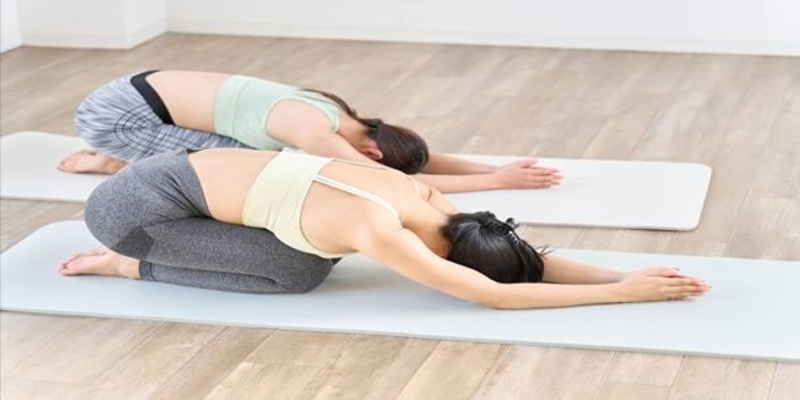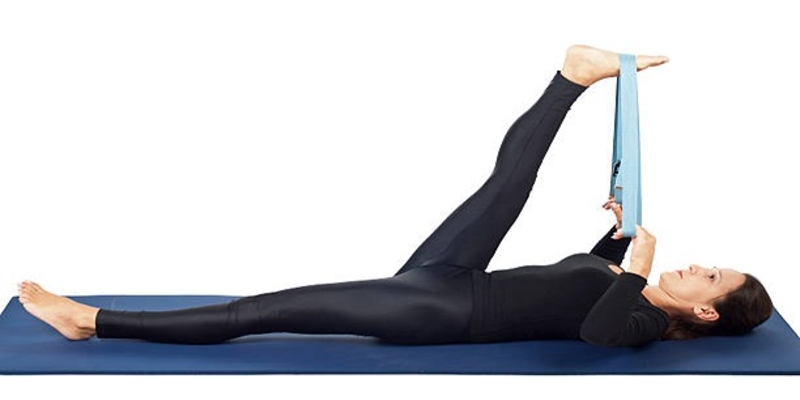Knee Pain Solutions: 7 Yoga Poses for Pain Relief and Flexibility
Feb 27, 2024 By Madison Evans
Yoga is revered not only as a practice for spiritual enhancement but also as a therapeutic form of exercise for managing various physical ailments. Among the most common issues that individuals face today is knee pain, which can hinder daily activities and diminish quality of life. The gentle, low-impact nature of yoga makes it an ideal remedy for those wrestling with knee discomfort. In this guide, we'll introduce you to seven yoga poses specifically curated to alleviate knee pain and improve flexibility. Emphasizing the significance of proper alignment and mindful movements, these poses aim to strengthen the surrounding muscles, stabilize the knee joint, and promote a range of motion. Whether you're a seasoned yogi or new to the mat, integrating these exercises into your routine can contribute to healthier, more resilient knees.
Child's Pose (Balasana)

Child's pose is a restorative posture that stretches the hips, thighs, and ankles while gently massaging the abdominal organs. To practice this pose:
- Begin by kneeling on the mat with your knees hip-width apart.
- Sit back onto your heels and slowly lower your forehead to the ground.
- Extend your arms forward or rest them by your sides, whichever is more comfortable.
- Hold the pose for 1-3 minutes while focusing on deep breaths and releasing tension in the lower body.
Child's pose promotes relaxation and helps reduce pressure on the knee joint, making it an excellent way to start or end a yoga session.
2. Warrior II (Virabhadrasana II)
Warrior II is a dynamic pose that targets the quadriceps, glutes, and hips while also promoting balance and stability. To practice this pose:
- Begin by standing at the top of your mat with your feet hip-width apart.
- Step your left foot back about 4-5 feet and turn it out to the side, keeping your right foot facing forward.
- Bend your right knee until it forms a 90-degree angle, making sure to align it with your ankle.
- Reach your arms out to the sides and gaze over your front hand.
- Hold the pose for 5-10 breaths before switching sides.
Warrior II improves strength and flexibility in the legs, helping to alleviate pressure on the knees. It also engages the core muscles, improving overall balance and stability.
3. Bridge Pose (Setu Bandhasana)
Bridge pose is a gentle backbend that targets the hips, glutes, and lower back while also stretching the chest and neck. To practice this pose:
- Begin by lying on your back with your knees bent and feet hip-width apart.
- Press your feet into the mat and lift your hips, creating a straight line from your knees to shoulders.
- Interlace your fingers underneath you and press your arms down into the ground while keeping your shoulders relaxed.
- Hold the pose for 5-10 breaths before slowly lowering back down.
Bridge pose strengthens the muscles surrounding the knee joint and improves flexibility in the hips and lower back, making it a beneficial pose for knee pain relief.
4. Tree Pose (Vrikshasana)
Tree pose is a balancing posture that targets the legs, core, and ankles while also promoting focus and concentration. To practice this pose:
- Begin by standing at the top of your mat with your feet hip-width apart.
- Shift your weight onto one foot and lift the opposite foot, placing it on the inner calf or thigh of your standing leg. Avoid placing your foot directly on the knee joint.
- Press your palms together in front of your chest and hold for 5-10 breaths before switching sides.
Tree pose strengthens the muscles surrounding the knees while also promoting better balance and stability, helping to prevent falls and injuries.
5. Half Pigeon Pose (Ardha Kapotasana)
Half pigeon pose is a deep hip opener that targets the glutes, hips, and thighs while also stretching the entire front of the body. To practice this pose:
- Begin on all fours with your hands below your shoulders and knees below your hips.
- Bring your right knee towards your right wrist and slide your right foot towards your left hand.
- Straighten your left leg behind you and lower to the ground, keeping your hips squared off towards the front of the mat.
- Hold the pose for 5-10 breaths before switching sides.
Half pigeon pose stretches the hip flexors, which can contribute to knee pain if tight. It also strengthens the glutes and hips, promoting better alignment and stability in the knee joint.
6. Extended Triangle Pose (Utthita Trikonasana)
Extended triangle pose is a standing posture that targets the legs, hips, and spine while also improving balance and flexibility. To practice this pose:
- Begin by standing at the top of your mat with your feet hip-width apart.
- Step your left foot back about 3-4 feet and turn it out to the side, keeping your right foot facing forward.
- Extend your arms out to the sides and hinge at the waist towards your right foot, placing your hand on a block or the ground.
- Gaze up towards your top hand and hold the pose for 5-10 breaths before switching sides.
Extended triangle pose strengthens and stretches the muscles surrounding the knee joint, promoting better range of motion and stability. It also engages the core muscles, improving overall balance.
7. Reclining Hand-to-Big-Toe Pose (Supta Padangusthasana)

Reclining hand-to-big-toe pose is a supine posture that targets the hamstrings, calves, and hips while also promoting relaxation. To practice this pose:
- Bend your right knee and bring it towards your chest, holding onto the big toe with your first two fingers or using a strap.
- Straighten your leg towards the ceiling and hold for 5-10 breaths before switching sides.
Reclining hand-to-big-toe pose stretches the hamstrings, which can contribute to knee pain if tight. It also helps relax the entire body, making it a great pose for relieving tension.
Conclusion
Incorporating these yoga poses into your routine can help relieve knee pain and improve overall strength, flexibility, and balance. Remember to always listen to your body and modify poses as needed. With regular practice, you may experience decreased knee pain and increased comfort in everyday activities.







